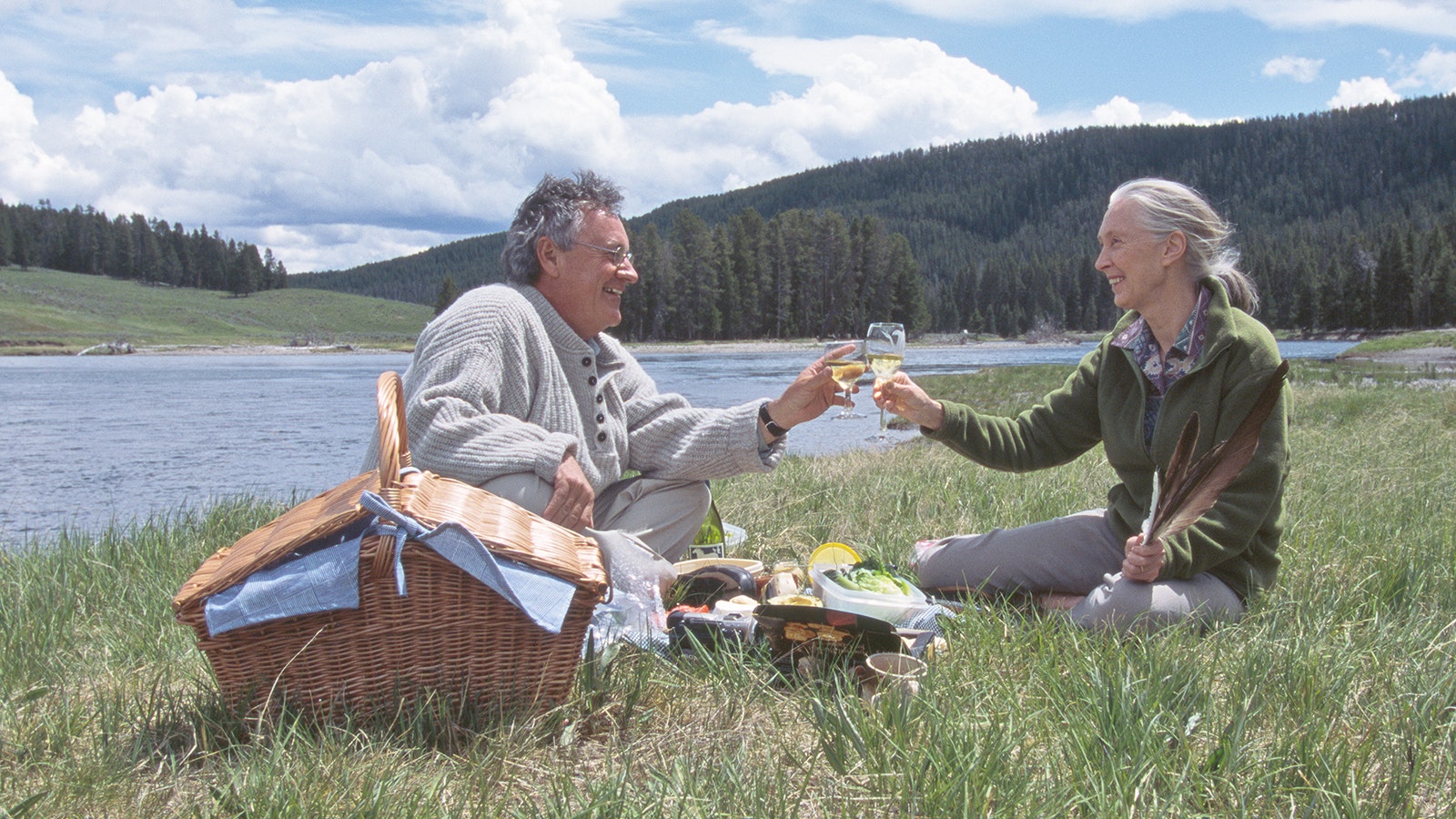There are few things more unsightly than a baseball cap sitting on one of the gorgeous and delicate bacterial mats that surround thermal features in Yellowstone National Park. One of those things is watching as people go off designated boardwalks to go after those hats.
The best thing a park visitor can do is leave them be.
One visitor seemed to be taking matters into his own hands Monday, according to a series of photos posted tothe Facebook group Yellowstone National Park: Invasion of the Idiots. He stepped out onto a bacterial mat at Grand Prismatic Spring in flip-flops to collect hats that had become blemishes on the pristine landscape.
While this tourist may have been well-intentioned, stepping onto any of Yellowstone's bacterial mats is considered thermal trespass and is punishable with anything from fines to a temporary ban from the park. Hat and object retrieval is best left to the professionals.
Thermal Trails
Yellowstone’s bacterial mats are alive.
The dynamic, colorful landscapes consist of layer upon layer of thermophiles, microscopic photosynthetic organisms that thrive in the intense heat of the park’s thermal basins.
Whether by sudden wind gust or willful mischief, items will occasionally end up on these bacterial mats.
Jeff Henry, lifelong Yellowstone employee, enthusiast and author, has retrieved plenty of odd items from these places.
“I found a tire that looked like it came off a car in the 1920s, with a large diameter and thin width,” he told Cowboy State Daily. “One time, I found a 1913 penny at the edge of Morning Glory Pool. And then lots of things you would expect, like jars, water bottles and lots of baseball caps.”
Stepping on Yellowstone’s bacterial mats is illegal, but someone must retrieve these discarded objects. That’s why it’s left to the professionals.
Yellowstone wasn’t available to comment on the protocols followed to retrieve discarded objects, but Henry remembered the methodology he followed when he had to. It’s all about observation, planning and following natural “trails.”
“I use my eyes and head to get out there,” he said. “I tried to walk where bison had walked to minimize the chances of breaking through the thermal crust. And, usually, the runoff channels leave little ridges of accreted geyserite along their borders. If you walk on those, then you don't damage the bacterial mats.”
The average Yellowstone tourist might not recognize these pathways across the bacterial mats. Henry said most park employees tasked with retrieving these items know where to step and how to minimize their impact on the fragile landscape.
If an item is out of reach, Henry and others would occasionally use a pole or a grabber to reach and retrieve the object. However, Henry said such tools usually weren’t needed.
“It wasn’t that hard to do, if you used your eyes and thought about what you’re doing,” he said. “It's been a long time since I've worked for the National Park Service, but (object retrieval) was more of a casual thing back then. If you saw a discarded piece of litter or somebody's hat had blown off, you would go get it.”
Don’t Try It
Several different types of thermophiles live in the bacterial mats surrounding Grand Prismatic Spring, and each thrives in a different environment.
According to the Intercollegiate Journal of Science, the brown, outermost layer is Calothrix, which thrives in temperatures between 86 and 113 degrees. The adjacent orange layer is primarily Phormidium, which thrives between 95 and 135 degrees.
The spring’s yellow and white colors come from Aquifex Hydrogenobaclum, which lives at a comfortable 131 to 162 degrees, and the green and yellow colors come from Synechococcus, which lives between 126 and 165 degrees.
The incredible beauty of Grand Prismatic Spring comes from the astonishing variety of thermophiles that thrive in its warm water. These microscopic ecosystems are so beautiful, diverse, and fragile that they have legal protection.
Henry’s experience showed that these bacterial mats have more endurance than many believe. That’s why he was able to more freely step onto and move across them during his tenure with the National Park Service.
“One or two people crossing a bacterial mat probably won’t do any harm,” he said. “It's pretty rare to see animal tracks in the bacterial mats, given the number of animals that circulate through the thermal areas. There aren’t a lot of discernible signs left behind.”
That said, Henry absolutely believes the park’s bacterial mats need to be protected at all costs. That’s why boardwalks and designated trails are so important, and people need to stay on them.
“One or two people might not cause any harm, but the impact of a large number of people stepping on the bacterial mats is obviously something that can't be tolerated,” he said. “That can’t be allowed to happen in today’s world.”
Henry doesn’t think the well-intentioned hat collector caused any permanent damage to Grand Prismatic’s bacterial mats, even though he violated the law and the park’s rules by doing so. Nevertheless, he adamantly dissuades anyone else from following in their footsteps.
“No visitors should take that initiative,” he said. “The bacterial mats will heal themselves over time, and I think one person probably won’t cause much damage, but it’s illegal, dangerous, and destructive. Let a ranger get the hats.”
Andrew Rossi can be reached at arossi@cowboystatedaily.com.








